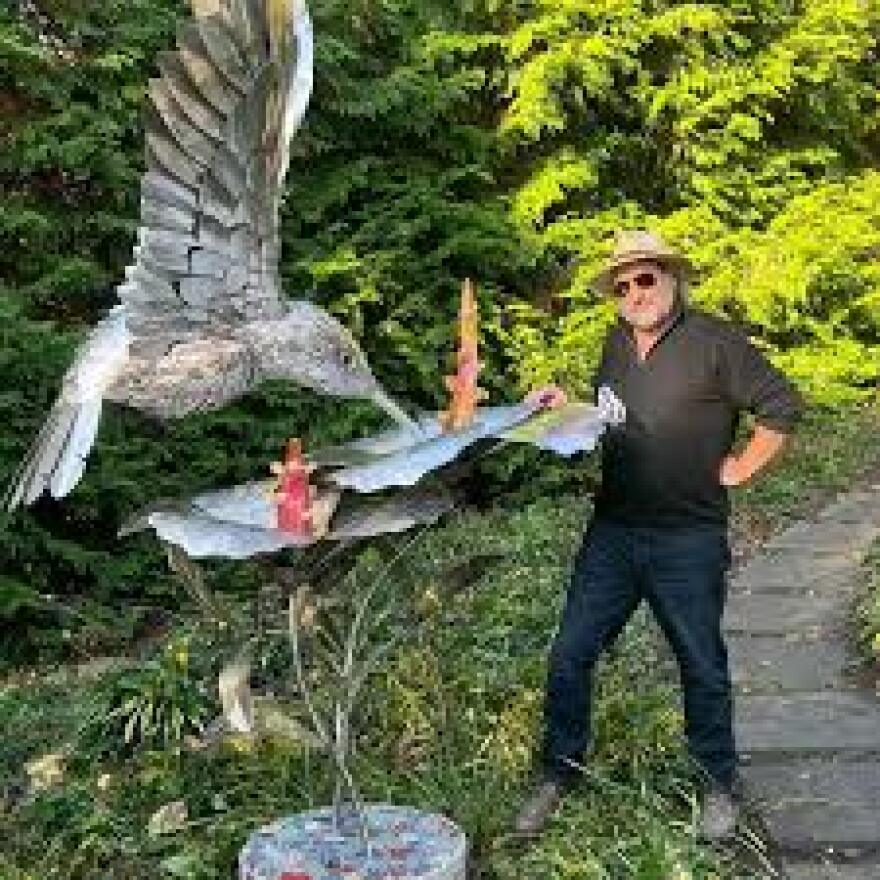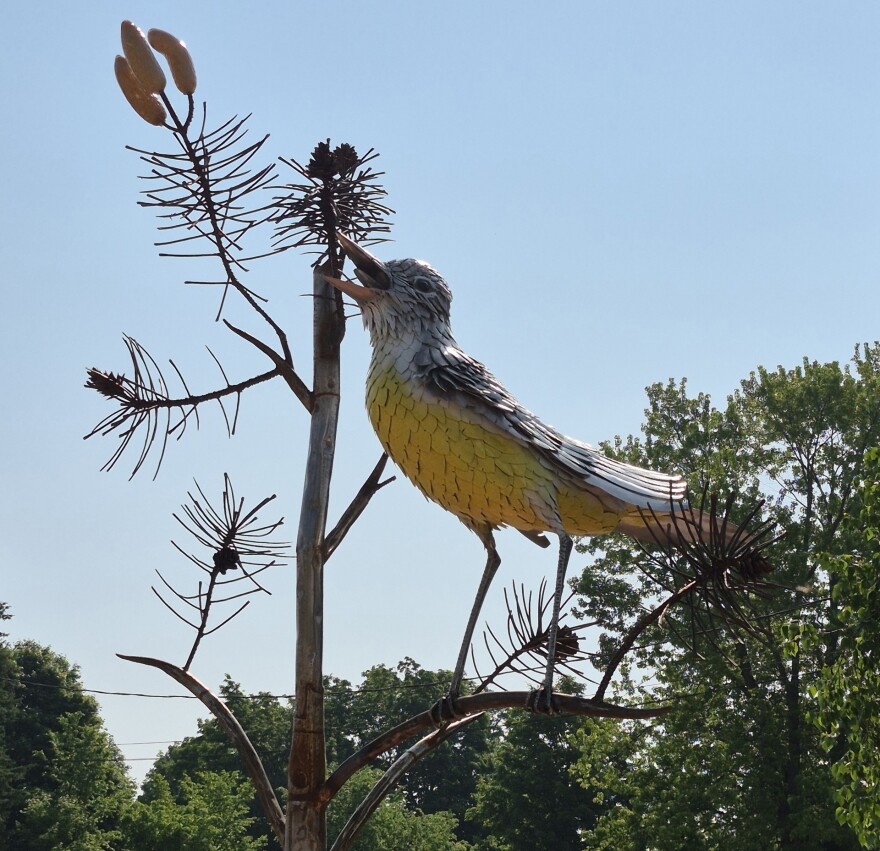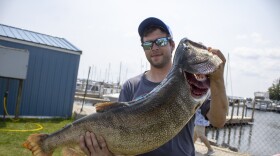Editor's note: This story was produced for the ear and designed to be heard. If you're able, WCMU encourages you to listen to the audio version of this story by clicking the LISTEN button above. This transcript was edited for clarity and length.
Rick Brewer: A tiny song bird has helped a northern Michigan village earn its first Bird City title in the state and it's own landmark. As part of her summer roadside attraction series, WCMU's Tina Sawyer takes us to Roscommon to find out what's warblin' downtown.

Tina Sawyer: That is the sound of a healthy jack pine forest. It's also the sound of the forests' inhabitant the Kirtland's Warbler. Earlier this summer, during their Kirtland's Warbler festival, a large sculpture was created and placed at Roscommon's Town Center to showcase the special bird species.
Amanda Wichinski: It's a large scale, 15 foot jack pine carbon steel tree with a about six foot stainless steel Kirtland's Warbler with an enamel yellow painted breast.
TS: That's Amanda Wichinski. She's with the village of Roscommon's economic development team. She says many bird watchers come to the wooded areas of the county to see the warbler every summer, and then they leave. The hope is that bird lovers will come from the forests to the downtown area to see the craftsmanship of the sculpture to honor the bird too.
AW: This is part of our public art program here at the village of Roscommon, where we have a vision for public art to be art for today, tomorrow, the future. And we want to have art that's authentic to us as a community, that's well natured, and builds on our hallmark community charm. So this sculpture is a perfect fit for that.

Bill Rapier: If we were to lose this one bird, jack pine budworms would do damage to these trees that are, will be harvestable about 50, 60 years later.
TS: That's Bill Rapier. Bill is the executive director of the Kirtland's Warbler Alliance.
BR: There would be no Kirtland's Warbler to swoop in, put on its cape, and swoop in like Superman to eat all those jack pine budworms.
TS: He's always willing to talk about the importance of the Kirtland's Warbler to the environment, and he also talks about the importance of the Kirtland's Warbler to the local economy as well.
BR: I think it's a wonderful program, simply because people come to Roscommon and Grayling and Mio from around the country and around the world every single year to see the Kirtland's Warbler. When they come, they spend their money, and they stay in local motels, they buy souvenirs, they fill up their cars with gas, they eat in local restaurants. And they're silent. Unlike somebody who comes in to snowmobile. You know, you see them, they're snowmobilers, but birders are just, you know, sort of there. They come in, they go. I think towns like Roscommon are starting to understand that there is an economic benefit to appealing to these birders, to bring them here, and not just bring them here, but show off the town and get them to stay a little bit longer.
TS: And that's good to know, because the Kirtland's Warbler only has a short time to stay in the Northern Michigan area. And if you wanted to know a fun fact about the Kirtland's Warbler?

BR: The hurricane season peaks in the last week of September. Kirtland's Warblers are here through the last week of September. They always leave right around the first week of October. How they know that the peak of hurricane season has passed? I have no idea.
TS: Getting back to the metal sculpture featuring the songbird in mid-melody and perched atop a branch, the piece was created and transported by trailer by steel and wood sculptor James Seaman out of New York State to Michigan. He says you won't see anything like it anywhere else.
James Seaman: Pretty much every piece I do is one-of-a-kind, unless I'm assigned to make two exactly the same. Each one evolves and hopefully improves as I learn. But yeah, there's no two pieces that are identical.
TS: Seaman says knowing this creation will bring happiness to many nature lovers keeps him doing what he loves.
JS: It's fun to make pieces that people can enjoy and put a smile on people's faces and you know, it's just an uplifting sort of art.
TS: Back in Roscommon, Amanda says more will be added around the warbler attraction soon and around the town as well, with information like how important the Kirtland's Warbler is to the habitat, how they eat invasive bugs, and how to help the environment to keep the Kirtland's Warbler coming back every year. And maybe even some samples of their calls. To get an example of what we might be able to hear, I asked Bill, Amanda, and James for their best Kirtland's Warbler.
BR: Chip, chip, chip.
AW: Chip, we chip, chip, chip, chip, we.
JS: I can't. I don't know. I didn't really research the sound, but I did research what they look like.
TS: Actual samples of bird calls to be added soon. From downtown Roscommon, Michigan, I'm Tina Sawyer, WCMU News.



